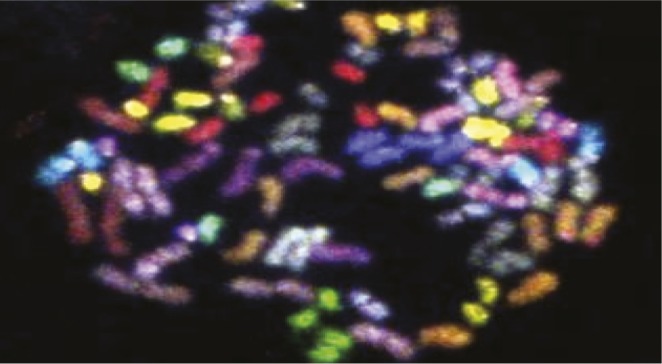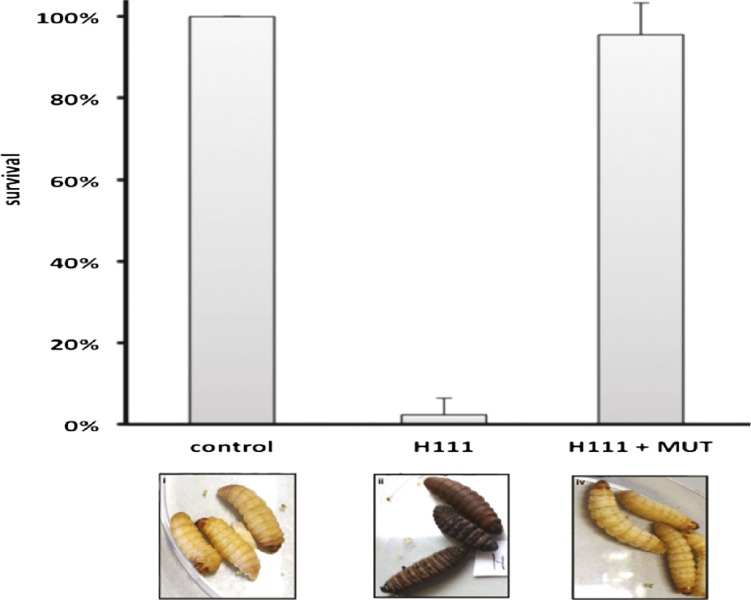Mangareva math included binary steps centuries before Leibniz
More than 300 years ago, the German mathematician and philosopher Gottfried Wilhelm Leibniz demonstrated the computational advantages of a binary number system, or base 2. Although Leibniz’s theory laid the foundation for computing with machines, humans largely continue to use verbal number systems built on base 10, raising the question of whether binary numeration is compatible with human cognition. Andrea Bender and Sieghard Beller (pp. 1322–1327) describe a traditional number system in use on Mangareva, a small island in French Polynesia, that superposes three binary steps onto a decimal structure. The authors demonstrate how this unique counting system, which arose from specific aspects of daily life on Mangareva, functions and facilitated arithmetic. Furthermore, the authors’ analysis suggests that counting systems represent complex cultural tools for numerical cognition, with seemingly unwieldy conventions that are cognitively advantageous. The invention of binary steps centuries before Leibniz, the authors report, reveals that humans can advance numeracy even in the absence of a formalized system of mathematics, thus highlighting the role of culture in the evolution and diversity of numerical cognition. — T.J.
How gut parasites prevent locust swarms

An adult migratory locust. Image courtesy of Matsumomushi/Wikimedia Commons.
Locust swarms, which often inflict agricultural devastation, can be triggered and sustained by a mix of aggregation pheromones that induce otherwise solitary locusts to gather into a migratory group. To investigate the effect of a common microsporidian locust parasite, Paranosema (Nosema) locustae, on swarming behavior, Wangpeng Shi et al. (pp. 1343–1348) exposed locusts to chambers containing fecal volatile chemicals from both healthy locusts and locusts infected with P. locustae. The authors report that the locusts aggregated to a greater extent in the chamber with uninfected volatiles, and also displayed a stronger antennal response to uninfected fecal volatiles than to those from infected locusts. Further, infected locusts produced fewer fecal volatiles than healthy locusts, with volatile pheromone production decreasing as the parasitic infection progressed. The authors found that P. locustae acidifies the locust hindgut, inhibiting growth of the gut bacteria that may act to fight parasite infection and produce aggregation pheromones. Further, compared with healthy locusts, infected locusts produced lower levels of the neurotransmitters serotonin, which can initiate a swarm, and dopamine, which can sustain swarming behavior, according to the authors. The results suggest that by changing the chemistry of the locust gut P. locustae acts to inhibit locust swarming behavior, according to the authors. — P.G.
Genome editing strategy reveals significance of genetic variant

Metaphase chromosomes showing premature chromatid separation (PCS). Image courtesy of Atsunori Oga (Yamaguchi University, Yamaguchi, Japan).
Biallelic and monoallelic mutations in the BUB1B gene that reduce BUBR1 protein levels can cause the rare, autosomal recessive syndrome premature chromatid separation with mosaic variegated aneuploidy [PCS (MVA) syndrome], characterized by the presence of cells with an abnormal number of chromosomes and a high risk of childhood cancer. Hiroshi Ochiai et al. (pp. 1461–1466) identified a single nucleotide substitution in an intergenic region located 44 kb upstream of BUB1B as a candidate mutation for the syndrome. To determine whether this mutation causes PCS (MVA), the authors devised a single base pair-editing strategy using transcription activator-like effector nucleases (TALENs)—DNA-cleaving enzymes that can be tailored to target virtually any DNA sequence of interest—to introduce the single nucleotide substitution in both alleles into the genome of human cells grown in culture. The authors report that clones with the mutation displayed reduced levels of BUB1B transcripts and BUBR1 protein, and chromosomal instability in the form of premature chromatid separation and mosaic variegated aneuploidy, all of which are cellular hallmarks of PCS (MVA) syndrome. The findings suggest that the intergenic single nucleotide substitution may cause PCS (MVA) syndrome, and provide a strategy for introducing biallelic single nucleotide substitutions into specific genomic sites that may prove useful for studying the function of nucleotide variants, according to the authors. — N.Z.
Targeted enzymes disrupt infection pathway
Moth larvae infected with a quorum sensing pathogen (Middle) and with the same pathogen in which quorum sensing has been disrupted (Right).
Infection by the human pathogen Burkholderia cenocepacia in immunocompromised individuals and people with cystic fibrosis has been correlated with poor prognosis. The increasing occurrence of B. cenocepacia in such individuals suggests that the effectiveness of antibiotics used to combat the pathogen is on the decline. Gudrun Koch et al. (pp. 1568–1573) investigated the action of the Pseudomonas aeruginosa enzyme PvdQ, as a possible alternative to antibiotics because of the enzyme’s ability to disrupt quorum sensing—a bacterial mechanism that helps to coordinate infection. The authors introduced two point mutations into PvdQ that altered the structure of the enzyme’s active site, changing its target substrate to C8-HSL, the primary quorum sensing inducer in Burkholderia species. The authors report that the altered PvdQ enzyme reduced the concentration of C8-HSL in B. cenocepacia cultures 48.5-fold when added exogenously and also rescued a population of Galleria mellonella when the larvae were infected with B. cenocepacia that produced the mutant PvdQ. The findings demonstrate that an enzyme produced by bacteria that disrupts quorum sensing can be altered to target the quorum-sensing substrate of a different bacterial species, suggesting that the technique might be used as a potential antimicrobial approach to lower the likelihood of antibiotic resistance. The engineered enzymes can also target specific bacterial species, according to the authors, thereby potentially reducing the disruption of normal host microbiota. — J.J.
Axon regeneration in adult zebrafish
Axon regeneration after nerve injuries and neurodegenerative diseases is an active area of research, but difficult to study in vivo in vertebrates. Marianna Graciarena et al. (pp. 1610–1615) used the posterior lateral line (PLL) of zebrafish to study axonal regeneration throughout the animal’s lifespan. Because PLL nerves are located just under the skin, and the neurons and targets have a reproducible spatial arrangement, the authors were able to follow reinnervation in live fish on a daily basis. The authors cut PLL nerves in adult and aging zebrafish, ages 1 to 15 months after fertilization, and studied the effects of the procedure. The authors found that axonal regeneration occurred throughout adulthood. The authors report that even irregularities in the original branching pattern were faithfully reproduced after regeneration, and that the older the fish, the longer it takes for nerves to regenerate. However, the age-related latency decreased following a second nerve cut. The authors demonstrated that a regeneration-promoting factor induced by the first nerve cut is present for several days at the site of the lesion and facilitates regeneration after a second nerve cut. The findings suggest that the zebrafish PLL is a useful model for studying axonal regeneration in vivo, according to the authors. — B.A.
Studying rare genetic variants tied to common diseases

Rare genetic variants can help decipher common diseases. Image courtesy of Jane Ades (NHGRI, www.genome.gov).
Over the last 5 years, genome-wide association studies of common genetic variants have uncovered a wealth of genetic variations tied to common human diseases such as diabetes, heart disease, and schizophrenia, but these studies fail to account for most of the apparent heritability seen in such diseases. Or Zuk et al. (pp. E455–E464) present principles for designing studies to uncover rare genetic variants associated with common diseases, given that alleles that strongly predispose individuals to disease—particularly informative for identifying drug targets—may be kept at low frequency by natural selection. The authors report that rare variant association studies would require tens of thousands of patients to yield statistically meaningful disease links. For a study with a 90% likelihood of detecting rare variants, a discovery sample might aim to include around 25,000 cases, the authors suggest. In rare variant studies, the authors add, disruptive alleles, which cause major alterations to protein sequences, are likely to be more powerful than missense alleles, which cause single amino acid changes. Further, analysis of multiple recently isolated populations, such as the Finnish, Bedouins, Amish, and Ashkenazi Jews, might facilitate the detection of disease-associated gene subsets. According to the authors, large-scale, systematic studies of rare genetic variants can help determine whether the cumulative contribution of such variants to common diseases is substantial. — P.N.



